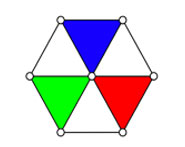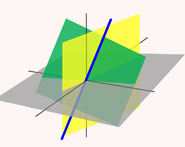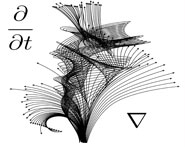


 تاريخ الرياضيات
تاريخ الرياضيات
 الرياضيات في الحضارات المختلفة
الرياضيات في الحضارات المختلفة 
 الرياضيات المتقطعة
الرياضيات المتقطعة
 الجبر
الجبر
 الهندسة
الهندسة 
 المعادلات التفاضلية و التكاملية
المعادلات التفاضلية و التكاملية 
 التحليل
التحليل
 علماء الرياضيات
علماء الرياضيات |
Read More
Date: 1-9-2020
Date: 11-3-2020
Date: 24-8-2020
|
Consider the Euclid numbers defined by
 |
where  is the
is the  th prime and
th prime and  is the primorial. The first few values of
is the primorial. The first few values of  are 3, 7, 31, 211, 2311, 30031, 510511, ... (OEIS A006862).
are 3, 7, 31, 211, 2311, 30031, 510511, ... (OEIS A006862).
Now let  be the next prime (i.e., the smallest prime greater than
be the next prime (i.e., the smallest prime greater than  ),
),
 |
where  is the prime counting function. The first few values of
is the prime counting function. The first few values of  are 5, 11, 37, 223, 2333, 30047, 510529, ... (OEIS A035345).
are 5, 11, 37, 223, 2333, 30047, 510529, ... (OEIS A035345).

Then R. F. Fortune conjectured that  is prime for all
is prime for all  . The first values of
. The first values of  are 3, 5, 7, 13, 23, 17, 19, 23, ... (OEIS A005235), and values of
are 3, 5, 7, 13, 23, 17, 19, 23, ... (OEIS A005235), and values of  up to
up to  are indeed prime (Guy 1994), a result extended to 1000 by E. W. Weisstein (Nov. 17, 2003). The indices of these primes are 2, 3, 4, 6, 9, 7, 8, 9, 12, 18, .... In numerical order with duplicates removed, the Fortunate primes are 3, 5, 7, 13, 17, 19, 23, 37, 47, 59, 61, 67, 71, 79, 89, ... (OEIS A046066).
are indeed prime (Guy 1994), a result extended to 1000 by E. W. Weisstein (Nov. 17, 2003). The indices of these primes are 2, 3, 4, 6, 9, 7, 8, 9, 12, 18, .... In numerical order with duplicates removed, the Fortunate primes are 3, 5, 7, 13, 17, 19, 23, 37, 47, 59, 61, 67, 71, 79, 89, ... (OEIS A046066).
REFERENCES:
Banderier, C. "Fortunate and Unfortunate Primes: Nearest Primes from a Prime Factorial." Dec. 18, 2000. https://algo.inria.fr/banderier/Computations/prime_factorial.html.
Gardner, M. "Patterns in Primes are a Clue to the Strong Law of Small Numbers." Sci. Amer. 243, 18-28, Dec. 1980.
Golomb, S. W. "The Evidence for Fortune's Conjecture." Math. Mag. 54, 209-210, 1981.
Guy, R. K. Unsolved Problems in Number Theory, 2nd ed. New York: Springer-Verlag, p. 7, 1994.
Sloane, N. J. A. Sequences A006862/M2698, A005235/M2418, A035345, and A046066 in "The On-Line Encyclopedia of Integer Sequences."



|
|
|
|
دراسة: حفنة من الجوز يوميا تحميك من سرطان القولون
|
|
|
|
|
|
|
تنشيط أول مفاعل ملح منصهر يستعمل الثوريوم في العالم.. سباق "الأرنب والسلحفاة"
|
|
|
|
|
|
|
الطلبة المشاركون: مسابقة فنِّ الخطابة تمثل فرصة للتنافس الإبداعي وتنمية المهارات
|
|
|